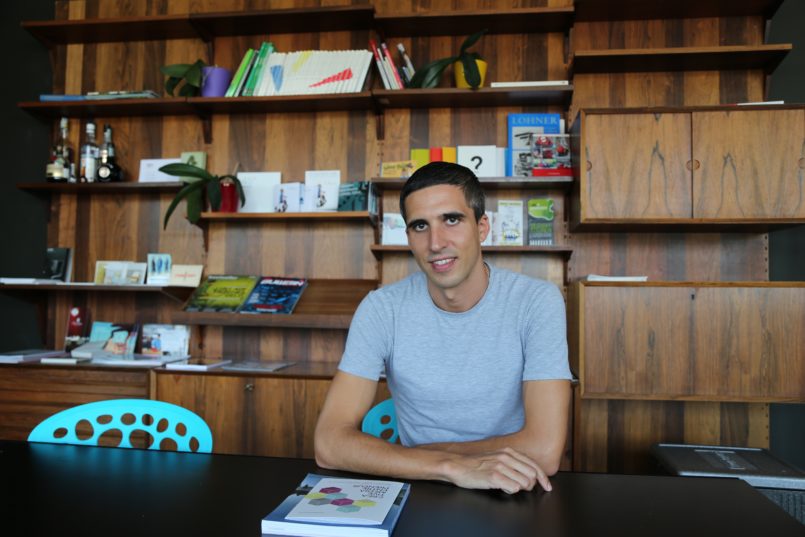Der spanische Architekt Hector Pérez Romero sammelt im Rahmen von Erasmus for Young Entrepreneurs internationale Erfahrung in der Tabakfabrik Linz. „An Linz schätze ich das tolle Kulturangebot, wie das Ars Electronica Festival. Die Tabakfabrik ist ein Ort, wo man die Transformation einer Stadt vom Industrie- zum Kreativstandort miterleben kann“, sagt der 32-jährige Baske, der in seiner Heimatstadt Bilbao ein Architekturbüro eröffnen und dort interdisziplinär mit DesignerInnen und KünstlerInnen zusammenarbeiten möchte. Seinen Blogbeitrag widmet Hector seinem Interims-Arbeitsplatz Tabakfabrik und den für Linz brisanten Themen Mobilität und Verkehr.
No one can deny that Tabakfsabrik is a magical place. When I first saw the building, I imagined it in the days when it was a functioning tobacco factory. One of the things that most amazes me when I am in front of industrial architecture is that the essence of the place is still present. Now Cigarette storage rooms are „stores of knowledge” and co-working spaces.
Although I can see some areas needing development, Tabakfabrik team is already working on this every single day. There are many tools to analyze and reorganize the future of a place and one of them is prospective. Prospective helps us to imagine several future scenarios, although each one contains a degree of uncertainty. It is impossible to know what the future holds, or even to have a plan for it. All this leads me to ask several questions regarding Tabakfabrik and the city of Linz. Although I am architect, in this case my appreciation comes from my experience as a citizen, which is much greater than my experience as an architect.
Cities and governments have been aware for many years that mobility is the negative result of poor accessibility; if a city or an environment is accessible, we don’t need to even consider mobility. I find it interesting to make this brief definition to ask why such a compact, flat and accessible city devotes so much of its space to vehicles. How many square metres lost to citizens because they are given to roads, parking areas and private vehicles? Is it really something that most of the time is stuck and consuming space a priority? All these questions are not easy to answer and invite us to reflect on what we want for Tabakfabrik and Linz.
If you have the chance to go to Linz, make sure you visit the old tobacco factory and immediately you will realize that something is happening. Many of the buildings are being upgraded and others are already working. As Tabakfabrik says one of the ideas leading to this place „Open due to renovation.“ But the things that worry me are the ones that remain the same. To all the information and the work of many professionals you can see how we want the future Tabakfabrik. I have been fortunate to see pictures, models and renderings where cars do not appear. There are spaces where people enjoy, dance, read or just talk in spaces exclusively dedicated to pedestrians. Maybe deep down everybody knows that the car is not a fundamental element of future plans.

Hector Pérez Romero sammelt bis Dezember internationale Erfahrung in der Tabakfabrik Linz.
My opinion is that people get used to the changes and for that reason should not be afraid to make decisions. Around the old factory there are many options to park vehicles. In this way we can enjoy one of the most welcoming places of Tabakfabrik, surrounded by each and every one of the buildings that compose it. All this analysis is also for the city of Linz where I see hundreds of cars every day and even have to press a button to cross the road in certain places. Who would think that pedestrians have to ask permission to use the city? We must analyze what percentages of journeys are made on foot, bicycle, car or public transport to prioritize based on that data. How much and how do we move? That should be the question to ask.
In conclusion the promotion of mobility to walking and cycling should be a priority in urban planning design, and also in new proposals such as that of Tabakfabrik Linz. Cities should be compensated for not using the engine vehicle within the city so that people look for other alternatives. I do not mean that the use of the engine vehicle should not exist, but we must have a balance where the engine vehicle is not the protagonist, because in this film the vehicle must be the secondary actor.
Hector Pérez Romero